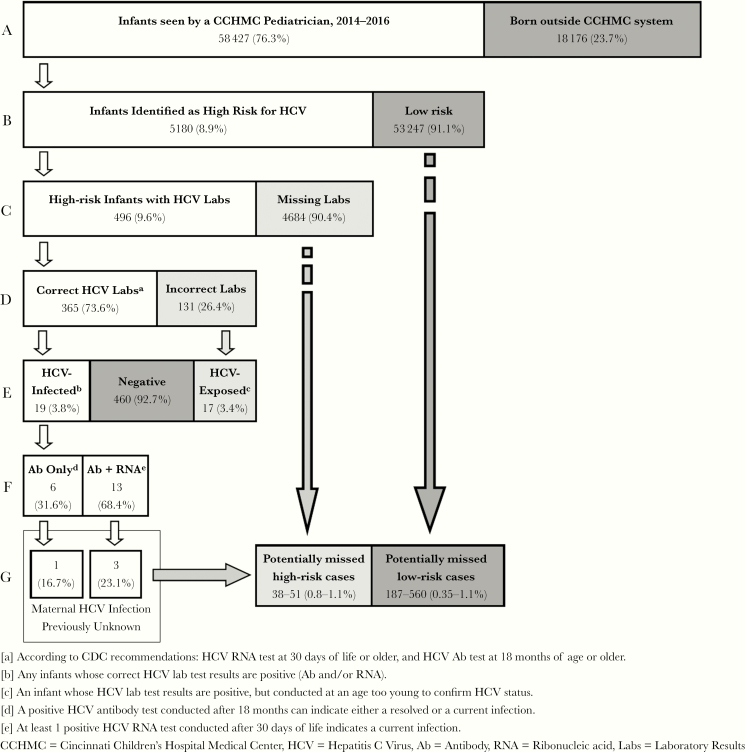Figure 1.
Diagnostic cascade for determining hepatitis C virus (HCV) infection rates among high-risk infants, defined as having an intrauterine drug exposure and/or confirmed hepatitis B virus or human immunodeficiency virus infection. Percentages in lines B–G are calculated as the proportion of infants who completed the previous step of the diagnostic cascade. The lowest estimated number of missed high-risk cases of HCV infections was calculated as the proportion of infants with a current HCV infection born to a woman whose HCV infection status was previously unknown ([G] Ab + RNA, Previously Unknown) over all of the high-risk infants who were tested according to Centers for Disease Control and Prevention (CDC) recommendations ([D] Correct HCV Labs) multiplied by the number of high-risk infants who were not tested ([C] Missing Labs). The highest estimated number of missed HCV infections was calculated using the same methodology but used the proportion of all HCV-infected infants (E), regardless of previously known maternal infection, in the numerator. The estimated range of potentially missed low-risk cases was calculated using the same methodology (data not shown).

